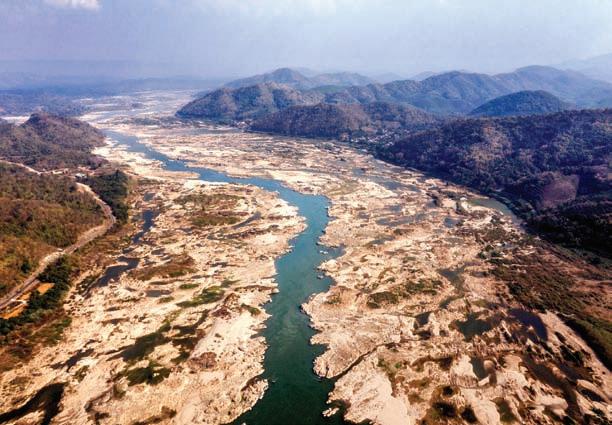
13 minute read
India’s Special Frontier Force: A Force
INDIA’S SPECIAL FRONTIER FORCE: A FORCE TO RECKON WITH
Special Frontier Force has played an important role in multiple military operations, starting from 1971 India-Pakistan war to the 1999 Kargil battle largely functioned under the shadows. Now is the time the government should give the SFF a lead as it has already drawn first blood from the PLA
Advertisement
By SRI KRISHNA
I
t is the mine blast killing a Tibetan in the ongoing India China standoff along the Line of Actual Control (LAC) in Ladakh, which has brought the Special Frontier Force (SFF) created almost 58 years ago after the SinoIndian War in 1962 to the limelight once again. Among the major reasons for the creation of this Force on November 14, 1962 was to conduct covert operations behind Chinese lines in the event of another Sino-Indian War.
The Force known as ‘Establishment 22’ or just ‘22’ due to its first Inspector General, Maj. Gen. Sujan Singh Uban, who commanded the 22nd Mountain Division as an artillery officer in Europe during World War II is based in the Uttarakhand hill station of Chakrata and put under the direct supervision of
Then Prime Minister Jawarlal Nehru meeting Army jawans during 1962 India-China war (File photo) the Intelligence Bureau (IB), and later, the Research and Analysis Wing (RAW), India’s external intelligence agency and is not part of the Indian Army but functions under their operational control with its own rank structure, charter and training infrastructure.
It falls under the authority of Directorate General on Security in Cabinet Secretariat headed by an Inspector General (IG), who is selected from the Major General rank of the Indian Army that reports directly to the Prime Minister’s Office (PMO).
The need for such a force was suggested by General KS Thimayya, who was the Army chief between May 1957 and May 1961, but was not initially accepted by Prime Minister Jawaharlal Nehru and Defence Minister VK Krishna Menon.
By the end of 1962, after immense lobbying by the Intelligence Bureau Chief Bhola Nath Mullick and World War II veteran Biju Patnaik, Nehru government finally ordered the raising of this elite commando unit and specialised mountain divisions called Vikas Battalion later renamed Special Frontier
Force which primarily composed of Tibetan resistance fighters from Tibet Autonomous Region (TAR) and are followers of Dalai Lama.
The primary task of SFF is defence against People’s Liberation Army (PLA) Ground Force as well as conducting clandestine intelligence gathering and commando operations along the Chinese Theatre. Chushi Gangdruk leaders were contacted for recruitment of Khampas into this new unit. An initial strength of 5000 men, mostly Khampas were recruited at its new Mountain Training Facility at Chakrata.
The SFF has played an important role in multiple military operations — from the 1971 India-Pakistan war to the 1999 Kargil battle — but has largely functioned under the shadows.
Such is the secrecy around the SFF that a member of Tibet’s Parliament-in-exile reportedly said after Nyima’s death that it was about time India acknowledges the role they play.
Not much is known about the force, but military experts say it comprises men as well as women, and receive the same training offered to elite commandos.
According to those having knowledge of this force said both men and women soldiers in the SFF are “highly motivated and trained special forces personnel”. Their training is akin to that imparted to commandos and Special Forces.
“They are trained extensively in various aspects of mountain warfare and are mostly deployed as part of India’s defence against China, but details of most of their operations are classified,” they said.
The SFF personnel are elite forces known to be trained in highaltitude warfare and are excellent mountain warriors.
Lt Gen. Satish Dua (Retd), former head of the Integrated Defence Staff, said the Indian Army follows a concept of deploying scouts regiments comprising local residents for mountainous and border areas.
“This is because local residents are most suited to work and operate in high altitude and rugged terrain with harsh climate,” he added.
“They also have knowledge of ground and customs and language. We have Arunachal scouts, Dogra scouts, among others. Similarly, in the Ladakh region, because they know the terrain well. The SFF also has a substantial percentage of Tibetan refugees who want to serve voluntarily and are gainfully employed in the terrain that they are suited for,” he said.
Asked about the dual control of the SFF, he said, “We have different forces under different verticals. The central armed police forces involved in borderguarding duties don’t come under the Ministry of Defence (MoD) but under the Ministry of Home Affairs (MHA). The SFF has a separate control because it also has Tibetan refugees and involves another country. However, when they operate, they all work in synergy with each other.”
According to information, China
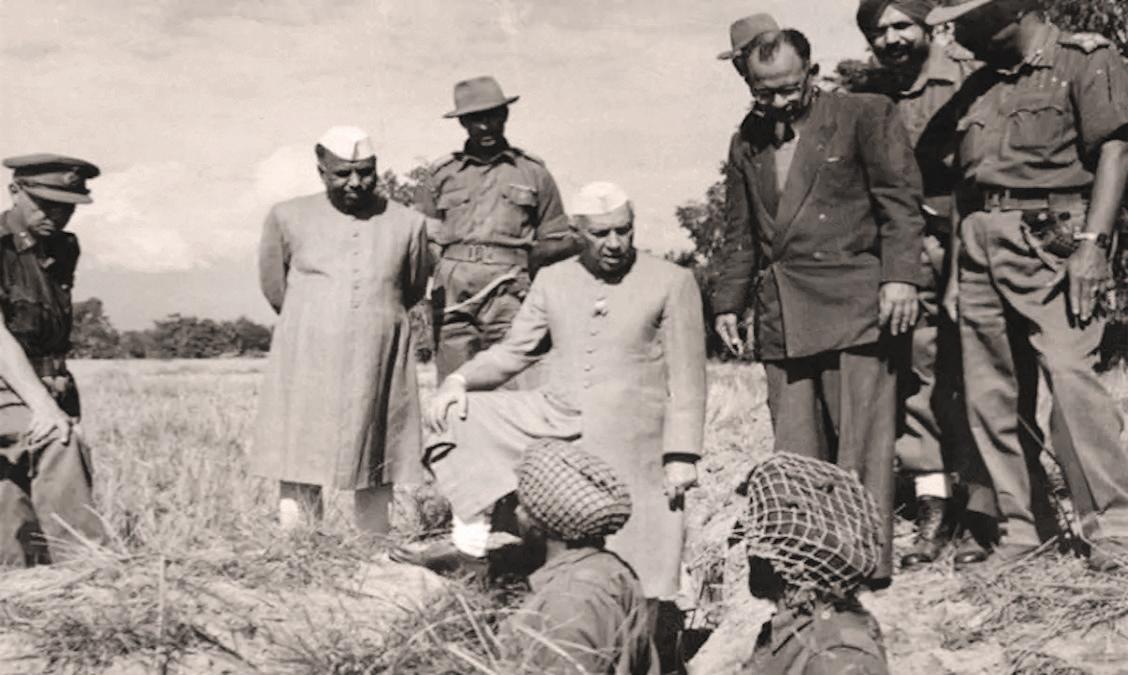
Nehru taking stock of situation in border area of northeast during 1962 war (File photo)
Lt Gen Niazi and Lt Gen Jagjit Singh Aurora during 1971 Bangladesh Liberation War (File photo)
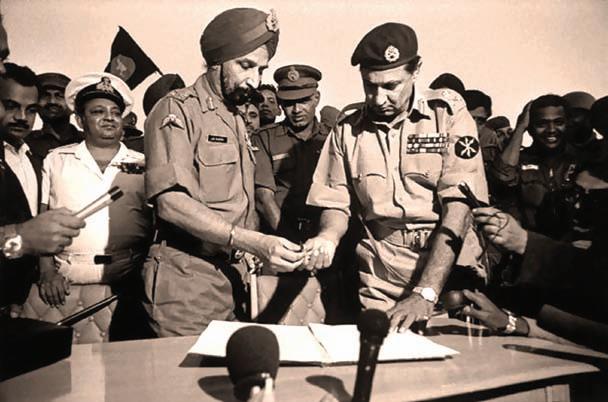

protested over the Indian Army’s predominantly ethnic Tibetan SFF securing tactical heights in late August along the southern bank of the Pangong Tso lake, along the disputed LAC in eastern Ladakh.
From various statements by Chinese officials in Beijing and associated Communist Party networks like the Global Times following the daring SFF operation in the critical Chushul sector, it seems that Beijing’s irritation and frustration over it stems only partially from being militarily out-manoeuvred in the ongoing see-saw face-off between the rival armies since early May.
Senior Indian security and military analysts believe that a major proportion of Chinese ire and frustration emanates more from being outflanked by a force comprising mainly Buddhist Tibetans, a community China has ruthlessly oppressed and dominated for 70 years, and continues to subjugate after taking over their homeland in 1950.
But what is even more intrinsically galling for the seemingly redoubtable PLA, is that they were effortlessly bested by soldiers owning enduring fealty to the 14th Dalai Lama Tenzin Gyatso, whose authority and standing Beijing has spent years denigrating and vilifying, but without total vindication.
“The essentially Tibetan SFF’s success in the military action along the Pangong Tso lake on the night of August 29-30 has heightened nervousness among senior Chinese leaders who remain intrinsically nervous about Tibet, Buddhism and the Dalai Lama,” said former head of RAW and a Chinese specialist Jaiyadeva Ranade. The Chinese leadership fears this could provide some fillip or incentive to Tibetans to unite and resist the PLA in their oppressed homeland, added Ranade, who currently heads the Centre for China Analysis in New Delhi.
The Amsterdam-based European Foundation for South Asian Studies, or EFSAS, concurs. In its September 4 newsletter, it declared that China was wary of a “peaceful uprising being encouraged within Tibet…and if India continues to be repeatedly provoked by China at the LAC, it may be forced to reconsider the reticence it has historically had to rake up the Tibet issue”.
The Chinese Communist Party mouthpiece, Global Times, reacted hysterically to the SFF, by calling its personnel the Indian Army’s ‘cannon fodder’. Apropos of no provocation, Qian Feng, director of the National Strategy Institute at Tsinghua University in Beijing, stated that “if India openly supported Tibet secessionism” on
ACCORDING TO INFORMATION, CHINA PROTESTED OVER THE INDIAN ARMY’S PREDOMINANTLY ETHNIC TIBETAN SFF SECURING TACTICAL HEIGHTS IN LATE AUGUST ALONG THE SOUTHERN BANK OF THE PANGONG TSO LAKE, ALONG THE DISPUTED LAC IN EASTERN LADAKH
Indian Army Chief Gen MM Naravane in a recent visit to Ladakh
Army jawans celebrating Kargil war victory (File photo)

border issues, does it mean China can also “support insurgencies in the northeast”. Unconsciously, Qian also frenziedly derided Tenzin’s death as an indicator that the SFF was not ‘special’ and far from being elite.
At the time of its raising in the early 1960s, Communism was anathema to the US and President John Kennedy seized upon the SFF as potential fifth columnists to undermine Chairman Mao Zedong’s suzerainty over newly occupied Tibet. The Chinese were yet to launch their ‘Sinicization’ to ethnically, culturally, societally and linguistically dominate Tibet and the world naively believed the Plateau could be liberated.
Consequently, the Central Intelligence Agency (CIA) joined hands with the IB earlier, and the RAW later, to instruct SFF personnel as a lightly equipped and armed guerilla force in mountain craft, rock climbing, infiltration, sabotage and irregular warfare.
In 1964, the SFF began their airborne training at Agra, later transferring to their own ‘dedicated’ facility at Sarsawa near Saharanpur which still operates. The CIA equipped the SFF with M-1/2/3 sub-machine guns and continued to work alongside the RAW, training the Tibetans till the early 1970s, when Delhi’s relations with Washington soured under President Richard Nixon who began cosying up to China after his first visit to Beijing in 1972. The CIA association thus ended.
But before it eventually concluded, the CIA joined hands with the IB in 1965 to lead an expedition of largely SFF personnel to the 23,640 feet high Nanda Devi peak in the Garhwal Himalaya, a year after China had successfully conducted its first nuclear test in Xinjiang province. Their classified electronic intelligence (ELINT) mission: the installation of a nuclear-powered
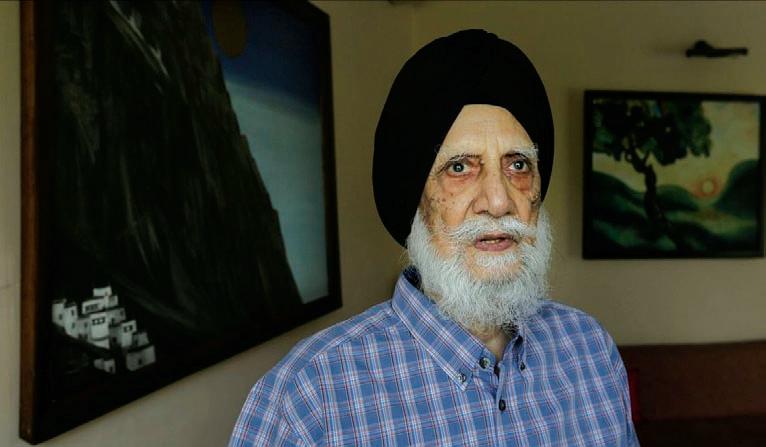
SFF Himalayan Expedition leader Captain Manmohan Singh Kohli of Indian Navy Pangong Tso lake at LAC in Ladakh sector

Indian Army troops movement in Galwan Valley on India-China border
“INDIAN ARMY FOLLOWS A CONCEPT OF DEPLOYING SCOUTS REGIMENTS COMPRISING LOCAL RESIDENTS FOR MOUNTAINOUS AND BORDER AREAS. THIS IS BECAUSE LOCAL RESIDENTS ARE MOST SUITED TO WORK AND OPERATE IN HIGH ALTITUDE AND RUGGED TERRAIN WITH HARSH CLIMATE”

-Lt Gen Satish Dua (Retd), former head, Integrated Defence Staff (IDF), Ministry of Defence, Government of India
sensing device to monitor future Chinese nuclear activity.
Just short of the summit the climbing party, carrying the monitoring device weighing some 56 kg, including a 10-feethigh antenna, was hit by a blizzard. Expedition leader Captain Manmohan Singh Kohli of the Indian Navy opted to save his team and hid the device that included a generator and its fuel comprising seven plutonium capsules in a special container, in an unmarked cave. When Captain Kohli returned with another expedition, also comprising SFF personnel, the following year in May 1966, to try and recover the device, including the plutonium capsules that were purportedly half the size of the atomic bomb dropped on Hiroshima and with longevity of over 100 years, nothing was found. Varied accounts claim that the entire equipment was buried in snow following an avalanche, but thereafter the entire Nanda Devi area has virtually been closed for decades, supposedly for environmental reasons.
Another expedition on a similar mission was launched in 1967 that successfully placed an analogous device on the nearby 22,500 feet high Nanda Kot peak, but due to recurring snow storms it was rendered blind and an SFF team, led again by Kohli retrieved it a short while later.
In the intervening decades, the SFF participated successfully in the Chittagong Hill Tracts during the 1971 Bangladesh Liberation War with Pakistan and thereafter in numerous clandestine counter insurgency operations including Bluestar in Punjab in 1984 and several in Kashmir, acting primarily as an IB and RAW ‘hit-squad’.
For several decades its recruitment was from among Tibetan refugees scattered across India in some 40 formal settlements and dozens of informal communities. In recent years, many Tibetan exiles are unwilling to join the SFF so the shortfall has been made up by recruiting Gurkhas.
Interestingly, in 1975 instructions allegedly proscribed the SFF from being deployed within 10 km of the LAC, unless under specific instructions. These reportedly emanated after the Force was allegedly conducting ‘unsanctioned’ cross-border raids and localised guerrilla operations. Perhaps, it is time now to give the SFF its lead, since its already drawn first blood from the PLA.
–The author is a senior journalist and media consultant.
DEFENCE STARTUP ECOSYSTEM A DECISIVE STEP TOWARDS ATMANIRBHAR BHARAT: DEFMIN

New Delhi. Defence Minister Rajnath Singh launched the Defence India Startup Challenge (DISC 4) during the iDEX event, featuring the initiatives aimed at expanding the horizons of Innovations for Defence Excellence (iDEX) ecosystem in New Delhi on September 29. Speaking on the occasion, Defence Minister Rajnath Singh said that the iDEX initiative stands out as one of the most effective and well-executed defence startup ecosystem created in our country and it would be a decisive step towards achieving self-reliance in the spirit of the Atmanirbhar Bharat campaign. iDEX4Fauji initiative and Product Management Approach (PMA) guidelines were also launched by the Defence Minister during the event. Each of these initiatives is expected to facilitate iDEX-DIO to scale up the programme qualitatively and quantitatively. iDEX4Fauji is a first-of-its-kind initiative, launched to support innovations identified by members of the Indian Armed Forces and will bolster frugal innovation ideas from soldiers/ field formations.
INDIAN NAVY LAYS KEEL FOR THIRD STEALTH FRIGATE OF PROJECT 17A
New Delhi. Vice Admiral S R Sarma, Chief of Materiel (COM) and Controller Warship Production and Acquisition (CWP&A) of the Indian Navy and V L Kantha Rao, Additional Secretary (Defence Production) laid the keel for the third ship (Yard- 12653) of the prestigious P17A class stealth frigates on September 10. The keel laying ceremony was conducted through an e-platform in the presence of Vice Admiral R B Pandit, Chief of Staff, HQWNC and Vice Admiral Narayan Prasad (IN Retd.), CMD, Mazagon Dock Ltd (MDL).
CZECH MINISTRY OF DEFENCE CHOOSES RAFAEL DEFENSE-BUILT SPYDER AIR DEFENSE SYSTEM
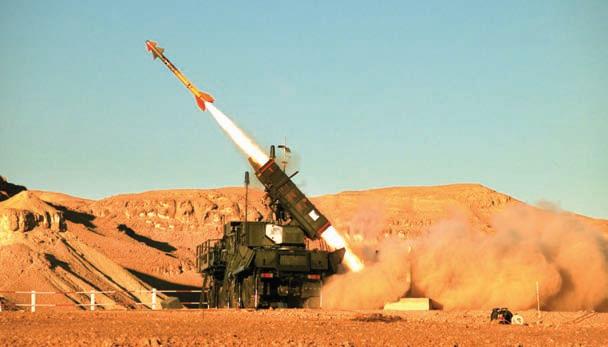
Haifa, Israel. The Czech Ministry of Defence has informed the Israel Ministry of Defense (IMoD) of its decision to equip its military with an Israeli air defense system produced by Rafael Advanced Defense Systems.
Israeli Defense Minister Benny Gantz, speaking on the development, said: “We thank the Czech government for their partnership and the decision to equip their military with Israeli air defense systems. This is another significant step in strengthening security relations between our two countries, and it is also great news for Israeli defense industries during such a complex period.”
Following an international tender process, which lasted several years, the Czech Ministry of Defense informed the Directorate of International Defense Cooperation (SIBAT) in the Israel Ministry of Defense, of its decision to equip its military with Israeli air defense systems.
On September 25, the Czech government approved the launch of procurement negotiations for four Israeli Surface-to-Air Python & Derby or SPYDER batteries, within the framework of a government-togovernment (GTG) agreement between the two countries. Israel was selected as the sole supplier for the project and the expected agreement between the countries’ defense ministries is estimated at hundreds of millions of dollars.
SPYDER is a quick reaction, low-to-high surface-to-air missile system designed to counter attacks by a variety of aerial threats including aircraft, helicopters and UAVs. The system provides effective protection of valuable assets, as well as first-class defense for maneuvering forces located in combat areas. The SPYDER system includes a radar system produced by Elta, a subsidiary of Israel Aerospace Industries (IAI).
Ariel Karo, EVP marketing and business development at Rafael, said: “We are very proud to have been selected to provide SPYDER systems to the Czech Republic through a GTG process. The decision to select SPYDER, developed and produced by Rafael, is a significant vote of confidence in our proven air defense capabilities demonstrated over the years through a variety of solutions that span from Iron Dome, David’s Sling, and the SPYDER air defense system, in service and combat-proven in different countries around the world.”



